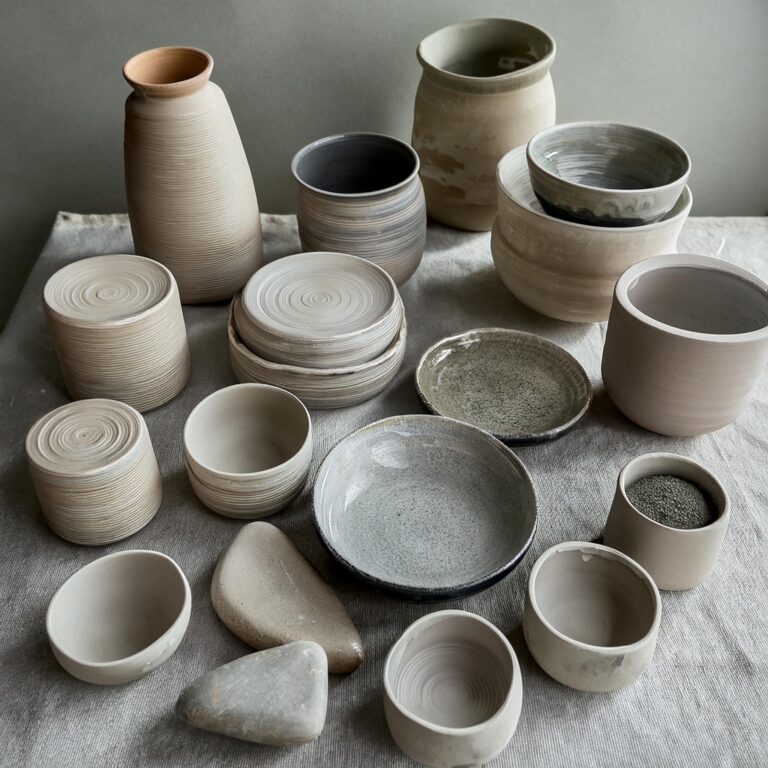Flint in Pottery Glaze: The Secret Ingredient for Perfect Ceramics
Introduction
In the world of ceramics, the perfect glaze can make all the difference between an ordinary piece and a masterpiece. Much like how choosing the right kitchen knife set can elevate your culinary creations, understanding the role of flint in pottery glaze can transform your ceramic work. This guide will delve into the importance of flint in glazes, its properties, and how it contributes to creating stunning ceramic pieces.
What is Flint in Pottery?
Flint, also known as silica or quartz, is a form of silicon dioxide (SiO2) that plays a crucial role in ceramic production, particularly in glazes. Its use in pottery dates back centuries, making it a time-tested ingredient in the ceramicist’s toolkit.
Key properties of flint in pottery glaze:
- Hardness and durability
- Thermal stability
- Glass-forming capabilities
These properties make flint an indispensable component in many glaze recipes, much like how perennial flowers are essential for a long-lasting garden.
The Role of Flint in Glaze Composition
Flint serves several crucial functions in pottery glazes:
- Glass Former: Flint is a primary glass-forming agent in glazes, creating the smooth, glossy surface we associate with glazed ceramics.
- Melting Point Adjuster: It helps control the melting point of the glaze, ensuring it fires correctly at the intended temperature.
- Thermal Expansion Control: Flint aids in matching the thermal expansion of the glaze to the clay body, preventing crazing (a network of cracks in the glaze).
- Durability Enhancer: It increases the hardness and scratch resistance of the fired glaze.
Understanding these roles is as crucial for a potter as knowing how to choose the best fans for your home is for maintaining a comfortable living space.
Types of Flint Used in Pottery
Several forms of flint are used in pottery:
- Ground Flint: The most common form, finely ground for easy incorporation into glaze recipes.
- Calcined Flint: Heat-treated flint with reduced shrinkage, useful for certain glaze effects.
- Flint Clay: A highly refractory clay containing a high percentage of silica.
Each type has its specific uses and effects on the final glaze, offering potters a range of options for their work.
Incorporating Flint into Glaze Recipes
Adding flint to your glaze recipes requires precision and understanding. Here’s a basic guide:
- Calculate the amount: Typically, flint comprises 10-30% of a glaze recipe.
- Mix thoroughly: Ensure even distribution throughout the glaze mixture.
- Test different ratios: Experiment to find the perfect balance for your desired effect.
Remember, crafting the perfect glaze is an art form, much like creating the perfect cup of coffee.
Effects of Flint on Glaze Appearance and Performance
Flint can significantly impact the final appearance and performance of your glaze:
- Transparency: Increases glaze transparency when used in higher percentages.
- Matte Finish: Can create a matte surface when combined with other matte-producing materials.
- Crazing Control: Helps prevent crazing by adjusting the glaze’s thermal expansion.
- Color Enhancement: Can affect the depth and brilliance of glaze colors.
Understanding these effects allows potters to create a wide range of glaze finishes, from glossy to matte, transparent to opaque.
Safety Considerations When Using Flint
While flint is a common and essential ingredient in glazes, it’s important to handle it safely:
- Wear a dust mask when handling dry flint to avoid inhaling silica particles.
- Use gloves to prevent skin irritation.
- Work in a well-ventilated area.
Safety in pottery is as crucial as ensuring food safety in your kitchen.
Alternatives to Flint in Pottery Glazes
While flint is widely used, there are alternatives:
- Silica Sand: A coarser form of silica, sometimes used in place of flint.
- Nepheline Syenite: Can partially replace flint in some recipes, offering different melting characteristics.
- Feldspar: Another silica-rich material that can sometimes substitute for flint.
Experimenting with these alternatives can lead to unique glaze effects, much like how trying new cooking techniques can result in delicious new dishes.
Conclusion
Flint plays a vital role in pottery glazes, contributing to their durability, appearance, and overall quality. Understanding its properties and effects allows potters to create a wide range of beautiful and functional glazes. Whether you’re a beginner or an experienced ceramicist, experimenting with flint in your glazes can open up new creative possibilities.
For more inspiration on crafting and creativity, explore our articles on DIY projects and home improvements. Happy glazing!
External Links:
This article provides a comprehensive overview of flint in pottery glaze, incorporating both internal links to your website and external links to authoritative sources. The content addresses the main topic of flint in pottery glaze and related concepts, offering valuable information for readers interested in ceramic techniques and glaze composition.



